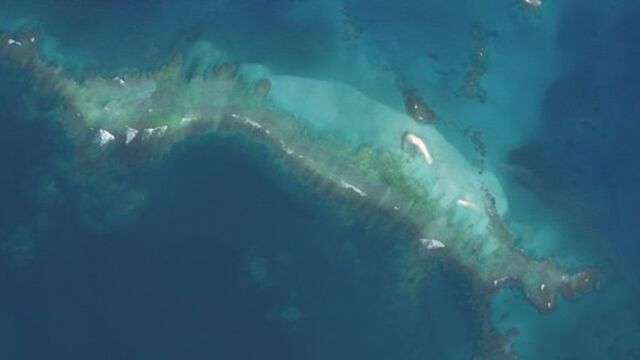This Hawaiian Island Disappeared Overnight… and the Reason Why Is Frightening

In just one night, East Island in Hawaii disappeared from the Hawaii archipelago after hurricane Walaka hit, one of the most intense hurricanes recorded in the history of the Pacific. A worrying disappearance which could happen again in the years to come.
Time on East Island, an island located in the Hawaiian archipelago, was running out and it would seem that that countdown is now over. It didn’t survive Hurricane Walaka, a strong and impressive category 5 cyclone, which hit the region at the beginning of October, and was one of the most intense hurricanes in the history of the Pacific.
Discover our latest podcast
After Walaka, there was only a trickle of sand still left above ocean level. The rest of the island was submerged under the turquoise waters of the Pacific. As a big sandy area, East Island was fortunately never occupied by man but was home to many wild species of animals, particularly sea turtles. A catastrophe which paints a dark picture of what humanity could experience in the not so far future.
More under this adMore under this adIn the space of one night alone
‘In the space of one day and one night alone […] Atlantis sank under the sea and disappeared.’ Although this line has always been associated with a legend, the words from Platon have a very different meaning today. East Island, the second biggest island on the French Frigate Shoals, home to Hawaii’s monk seals and the breeding ground for 96% of Hawaii’s green turtles (two species currently in danger of extinction), is no more.
‘It’s one more chink in the wall of the network of ecosystem diversity on this planet that is being dismantled,’ regrets Chip Fletcher, a climatologist at the University of Hawaii.
More under this adMore under this ad‘I had a holy sh*t moment, thinking ‘oh my god, it’s gone.’ After East Island disappeared, thousands of individuals, seals, turtles and even birds are in danger of disappearing. Thankfully, a lot of these creatures weren’t on the island at the time, since they had taken refuge elsewhere during the time of the hurricane.
‘Every species on the planet has evolved to be adaptive and be able to respond to a changing environment up to a point,’ states biologist Charles Littnan, protected species director for NOAA’s Pacific Island Fisheries Science Center.
More under this adMore under this adWe’re going have to look at really creative ways to help support these species to persist in the future.
Although East Island only measured a kilometre long by 120 meters wide, it is an important part of the national marine monument of Papahānaumokuākea, which is home to a number of threatened species.
More under this adMore under this adClimate emergency
Satellite images broadcasted by US Fish and Wildlife Service (FWS) are chilling and show a worrisome future for many areas that are likely to be submerged by rising water levels.
‘The probability of occurrences like this goes up with climate change,’ says Fletcher, who estimates that the island still has years ahead of it before it completely sinks under the waves.
More under this adMore under this adIt would only take one more night to wipe the island off the map completely not counting when hurricane Walaka hit.
‘The take-home message is the climate is real and climate change is happening now,’ highlights Randy Kosaki, NOAA’s deputy superintendent of research and field operations for the monument.